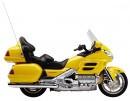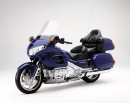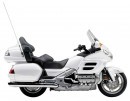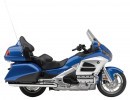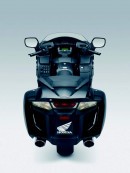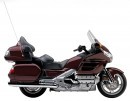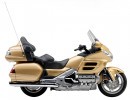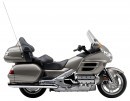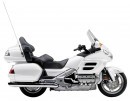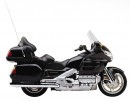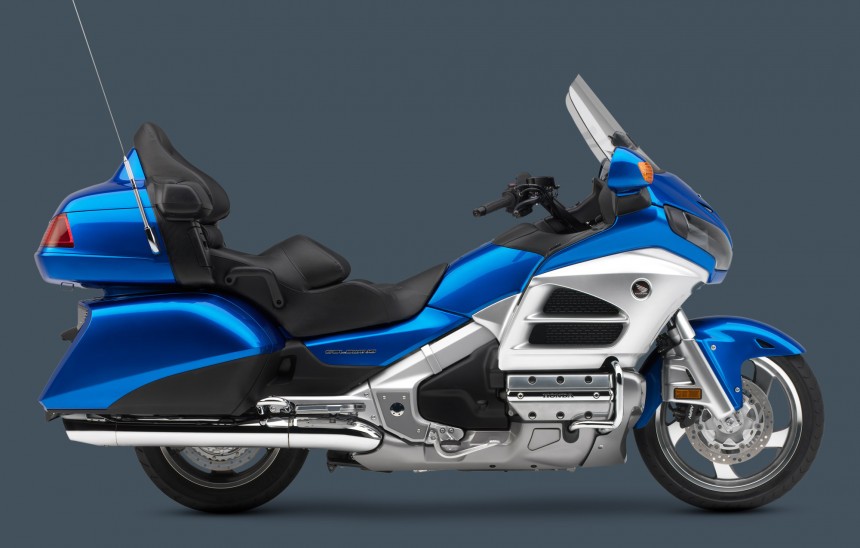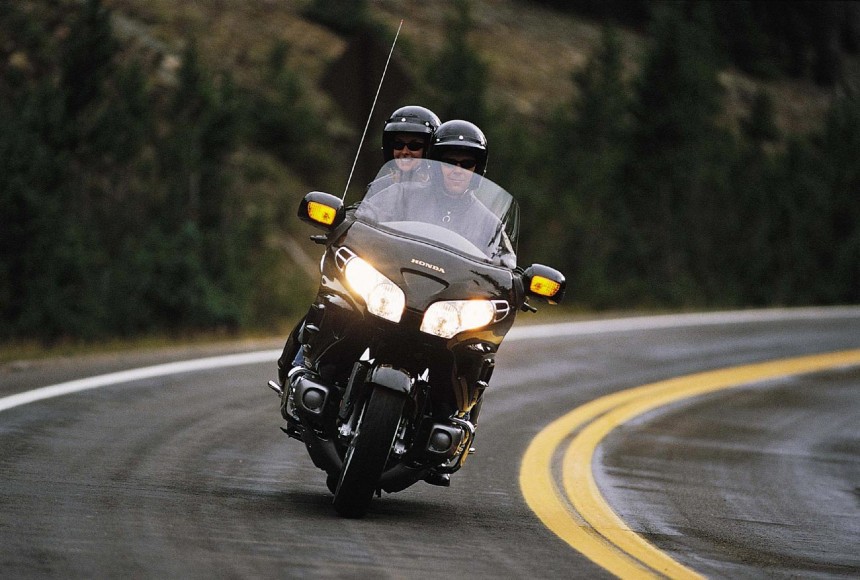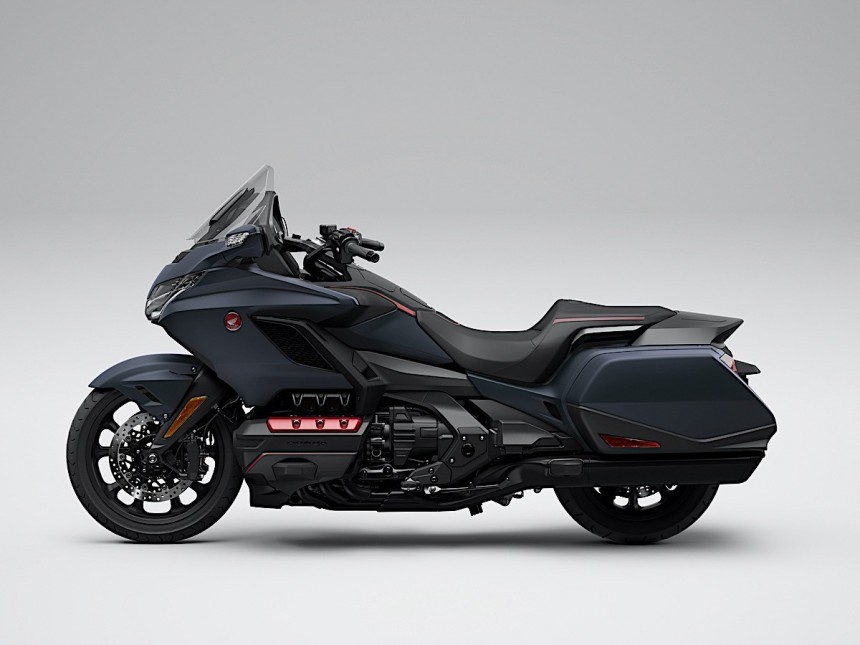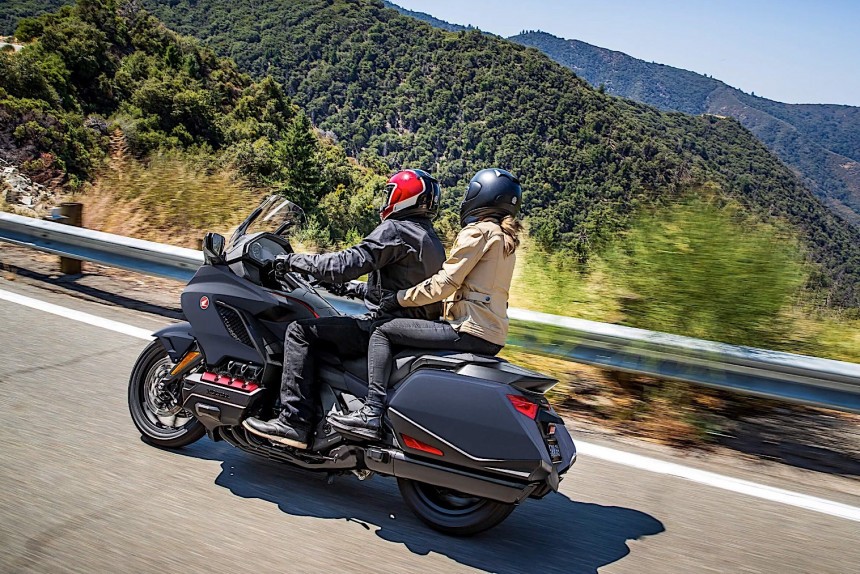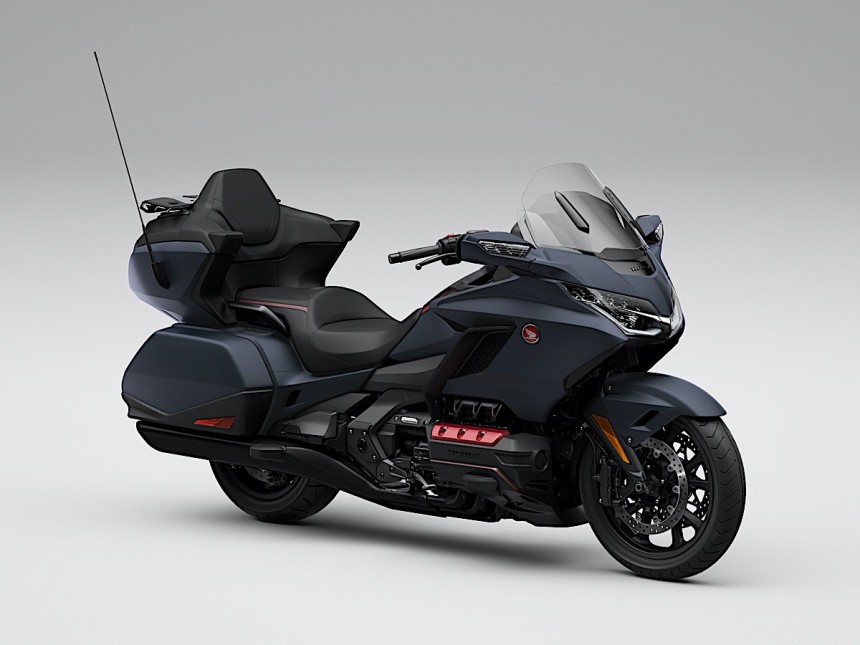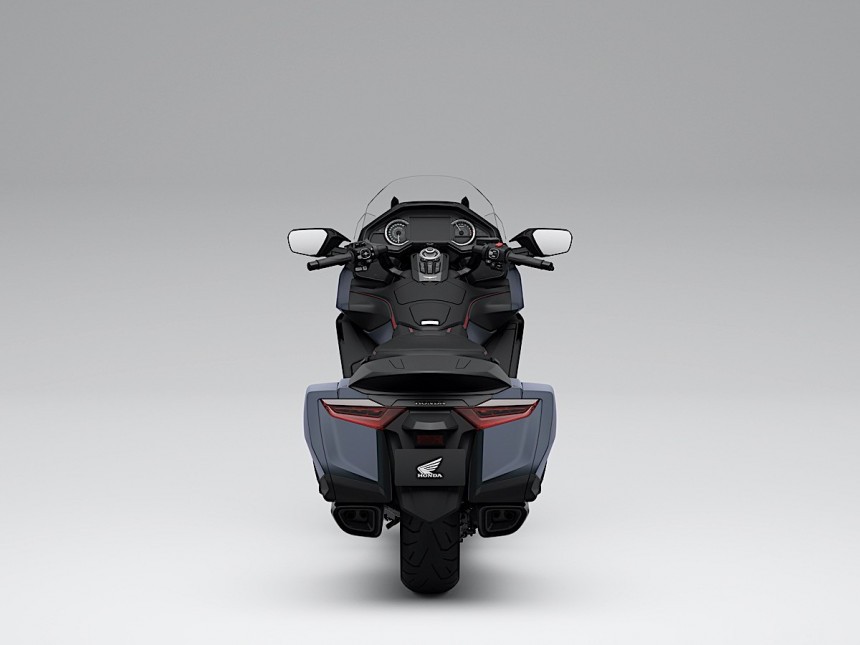Touring motorcycles are a special breed of vehicles. Consider this: if the car world has limousines at the top of the food chain, the motorcycle one has the touring.
What is a touring bike? Defining one is a bit tricky. Generally speaking, all kinds of bikes can be touring. All such a machine has to do is be able to travel for long distances – after all, that's what touring means, going places just for the sake of it.
But taking long travels, both in terms of distance and time, requires some special logistics and features. One needs to be comfortable enough on a motorcycle to be able to dismount it at the end of the ride without feeling pain and sorrow all over the main body parts. So comfort creatures must include anything from a windshield to keep bugs out of your teeth to a soft seat for the tush.
Enough luggage space, a large enough fuel tank, and maybe even a sound system are also required. The bike has to handle with ease and be able to take a beating from time to time, when road surfaces are not that great.
Motorcycle makers learned all of the above over time, so they started offering such features on models specially designed for long rides. And few of them have done it better over the years than Harley-Davidson.
The Americans have been at the forefront of the segment for decades, and still largely dominate the market thanks to a very strong touring lineup: no less than 13 models are presently being offered for the segment, from a category proudly called Grand American Touring.
However, Harley is not alone in this segment, and the biggest pressure comes from Honda. The Japanese play the game with a single model specifically designed for the task, but it's one so greatly designed that it's enough to hold off Milwaukee: the Gold Wing.
Sometimes mistakenly spelled Goldwing, the motorcycle has been sending shivers down Harley's frames ever since 1974. It was then that it was shown for the first time at the Cologne Motorcycle Show in Germany.
The ride came along on the heels of the mighty CB750, known by the Honda people who worked on it as the King of Motorcycles. But the Gold Wing was from the get-go imagined as the company's new flagship motorcycle, and as soon as engineer Shoichiro Irimajiri was put in charge of the bike's development team, everyone started referring to it as the King of Kings.
Irimajiri is one of the most important names in Honda history, for both the moto and auto sides of the business. He previously worked on the engines that powered the company's MotoGP bikes, but was also responsible for the V12 engine deployed on Formula 1 cars.
The initial idea of the project was to develop a large sport two-wheeler, as such sport bikes have always been a market favorite. As work progressed, and market insights showed riders were beginning to develop a real taste for touring machines, the design direction changed.
It changed because Honda's prime target market for the Gold Wing was supposed to be the U.S., and only after that Europe. At the time, the segment was rather poor in terms of available models and clearly dominated by Harley-Davidson, despite attempts by others, including BMW, to gain a foothold.
As far as the engine was concerned, the development team settled on a water-cooled four-stroke engine which would make the Gold Wing the first ever Japanese production motorcycle to use such a setup. It was based on the 1,470cc flat-six developed for the earlier Irimajiri-led Project 371.
By the time the bike was revealed in 1974 as the GL1000 KO, the project lead for the Gold Wing was Toshio Nozue, the man who previously gave birth to the CB750.
The motorcycle became an instant hit, both on the market and among specialists, and it now occupies a place in the Society of Automotive Engineers of Japan's list of 240 Landmarks of Japanese Automotive Technology.
American riders immediately responded to it, and in 1977, just three years after its premiere, the Gold Wing Road Riders Association (GWRRA) was founded in Phoenix, Arizona. One year later, the first run of the Wing Ding touring rally took place in the same location.
In 1983 the American Gold Wing Association was born, followed by the Gold Wing Touring Association in 1987.
Honda knew what a big market the U.S. could be for the model, but the way the bike was received prompted it to open a local assembly facility in Marysville, Ohio. It was used for other bikes as well, but it was there where from 1980 to 2010 American Gold Wings were made. Just 16 years after opening its doors, the facility celebrated its one millionth U.S.-made Honda, and it so happened to be a Gold Wing.
Since its introduction 49 years ago, Honda is said to have made around 640,000 Gold Wings, a great deal of them destined for the American market. They are split into six generations, almost each of them with something specific brought to the table.
The first one is known in the industry as the GL1000. It helped put the model on the map, despite an unfortunate mishap at one of the Honda suppliers that had it presented in the States with no saddlebags, windshield, and generally butt naked.
The version ran from 1974 to 1980, and it was of course based on the model shown in Cologne. The bike was powered by a liquid-cooled flat-four 999cc engine and weighed 584 pounds (265 kg) dry. It was successful enough to sell about 97,000 examples.
The second generation, aka the GL1100, was born in 1980 and was kept in production until 1984. It was the first kind of Gold Wing to be assembled in the U.S., and probably in small part because of that it did come with some significant changes.
First up, the wheelbase was a tad longer, and the entire thing was propped on an air suspension system. For the first time it came with tubeless tires, and gained just a bit of fat over the preceding version, now tipping the scales at 589 pounds (267 kg) dry. It also came with the bike maker's first combined braking system that engaged both front and rear brakes at the same time.
None of the above, however, made the Gold Wing GL1100 famous. What did that was an Argentine adventurer named Emilio Scotto. One day, he climbed on the back of a Gold Wing he nicknamed Black Princess, and made a complete tour of the world.
The man rode for a total of 457,000 miles (735,000 km), setting the world record for the longest distance completed on any motorcycle. It took him ten years to travel through 214 countries.
The second-generation Gold Wing will also be forever remembered as the one that spawned what may very well be Honda's first dedicated tourer, the GL1100 Interstate. Unlike anything that came before it, it had a factory-installed full fairing, saddlebags, and, optionally, a sound system.
The third generation of the bike is known as the GL1200, and came about in 1984 riding on a new, stiffer frame. The engine was repositioned and drove smaller wheels. It weighed 599 pounds (272 kg), the fattest of Gold Wings to that date. The model stopped being made in 1987.
Generation four is represented by the GL1500. It came about in 1988 with several major differences. The first one was that instead of the four-cylinder engine used until then, it now featured a flat-six. The engine ran a revised transmission with a sort of reverse gear.
Then, the entire body of the bike was wrapped in plastic body panels, most visible at the front as an imposing fairing. The Gold Wing came with a stiffer chassis, improved brakes, and a larger-capacity fuel tank. All the added extras made it heavier than anything before it, now tipping the scale at 794 pounds (360 kg) dry.
The GL1500 marked the longest-running Gold Wing version to that point, as it kept going until 2001.
The GL1800 is the fifth generation Gold Wing, and it now featured a fuel-injected 1,832cc engine that cranked out 115 horsepower and was seated in a new, lighter, aluminum frame.
This model became the last of the Honda Gold Wings to be made in the U.S. It happened in 2010, when Honda started relocating the facility to Japan. No new Gold Wing was made in 2011, but the range kept going from Asia, effectively splitting the generation in U.S.-made tourers (2001 - 2010) and Japanese-made ones (2012 – 2017).
The most recent incarnation of the Gold Wing, technically generation number six, is also called GL1800. It came about in 2018 (with a refresh in 2022), and forms the backbone of the current offering in the touring segment for Honda.
At the time of writing, the model is offered in four versions, Gold Wing and Gold Wing Tour, with or without DCT and airbags. Prices range from $26,500 to $32,900.
Despite its impressive past and the fact that it's a record holder, the Gold Wing seems to presently be engulfed by a cone of shadow. And that is made clear by the fact the Gold Wing Road Riders Association, the first of its kind, closed its doors last year.
The reasons cited for the closure include the effects of the global pandemic, of course, but there was one thing the people who ran the organization said that got us thinking about the not-so-bright future of the Gold Wing.
According to the GWRRA, the main thing driving it under is a shift in rider interest that resulted in no new members coming in, at least not to the levels the group was expecting. The existing members are getting old, and increasingly unable to keep the organization running.
At its peak, the GWRRA had around 80,000 members in 53 countries, split into roughly 800 chapters.
"While the GWRRA’s closure is undeniably the end of an era, we want to make sure their members and all Gold Wing enthusiasts know that Honda remains committed to the Gold Wing model and these customers for years to come," Honda itself said in the summer of last year, when the closure was announced.
It's unclear what shift in rider interest Honda has experienced. It's clear the touring segment is still a potent one, with Harley-Davidson running point but others, including BMW with its R 18, just joining the party.
Maybe it has something to do with the fact fewer and fewer people like to go for city-dwelling or, quite the opposite, adventure touring bikes. Both these categories are a lot easier to use than full touring bikes, which, although technically can be ridden by anyone, require a certain degree of sophistication that can only come with experience.
Although generally speaking touring motorcycles are favorites of the custom motorcycle industry, shops don't seem to go crazy over Gold Wings either. We don't stumble upon custom Gold Wings all that much, and when we do they come in extreme forms, like say the even less-appealing trike conversions some people seem to be so fond of.
Word of Honda discontinuing the Gold Wing line has been floating around for a while, but the bike maker seems determined, at least for now, to keep the model going. Sure, if you do read between the lines, the killing of the Gold Wing seems only like a matter of time.
In 2022, for instance, Honda announced the return of the Gold Wing for the 2023 model year in September. We're now at the end of October, and so far no news about the same thing happening for the 2024 model year.
Only time will tell if this extraordinary touring machine, the ultimate motorcycle as Honda used to describe it, can survive the hard times ahead. We can only hope it can, as we're always sad to see incredible machines go bust.
But taking long travels, both in terms of distance and time, requires some special logistics and features. One needs to be comfortable enough on a motorcycle to be able to dismount it at the end of the ride without feeling pain and sorrow all over the main body parts. So comfort creatures must include anything from a windshield to keep bugs out of your teeth to a soft seat for the tush.
Enough luggage space, a large enough fuel tank, and maybe even a sound system are also required. The bike has to handle with ease and be able to take a beating from time to time, when road surfaces are not that great.
Motorcycle makers learned all of the above over time, so they started offering such features on models specially designed for long rides. And few of them have done it better over the years than Harley-Davidson.
The Americans have been at the forefront of the segment for decades, and still largely dominate the market thanks to a very strong touring lineup: no less than 13 models are presently being offered for the segment, from a category proudly called Grand American Touring.
However, Harley is not alone in this segment, and the biggest pressure comes from Honda. The Japanese play the game with a single model specifically designed for the task, but it's one so greatly designed that it's enough to hold off Milwaukee: the Gold Wing.
The King of Kings
The ride came along on the heels of the mighty CB750, known by the Honda people who worked on it as the King of Motorcycles. But the Gold Wing was from the get-go imagined as the company's new flagship motorcycle, and as soon as engineer Shoichiro Irimajiri was put in charge of the bike's development team, everyone started referring to it as the King of Kings.
Irimajiri is one of the most important names in Honda history, for both the moto and auto sides of the business. He previously worked on the engines that powered the company's MotoGP bikes, but was also responsible for the V12 engine deployed on Formula 1 cars.
The initial idea of the project was to develop a large sport two-wheeler, as such sport bikes have always been a market favorite. As work progressed, and market insights showed riders were beginning to develop a real taste for touring machines, the design direction changed.
It changed because Honda's prime target market for the Gold Wing was supposed to be the U.S., and only after that Europe. At the time, the segment was rather poor in terms of available models and clearly dominated by Harley-Davidson, despite attempts by others, including BMW, to gain a foothold.
As far as the engine was concerned, the development team settled on a water-cooled four-stroke engine which would make the Gold Wing the first ever Japanese production motorcycle to use such a setup. It was based on the 1,470cc flat-six developed for the earlier Irimajiri-led Project 371.
The motorcycle became an instant hit, both on the market and among specialists, and it now occupies a place in the Society of Automotive Engineers of Japan's list of 240 Landmarks of Japanese Automotive Technology.
American riders immediately responded to it, and in 1977, just three years after its premiere, the Gold Wing Road Riders Association (GWRRA) was founded in Phoenix, Arizona. One year later, the first run of the Wing Ding touring rally took place in the same location.
In 1983 the American Gold Wing Association was born, followed by the Gold Wing Touring Association in 1987.
Honda knew what a big market the U.S. could be for the model, but the way the bike was received prompted it to open a local assembly facility in Marysville, Ohio. It was used for other bikes as well, but it was there where from 1980 to 2010 American Gold Wings were made. Just 16 years after opening its doors, the facility celebrated its one millionth U.S.-made Honda, and it so happened to be a Gold Wing.
Honda Gold Wing generations
The first one is known in the industry as the GL1000. It helped put the model on the map, despite an unfortunate mishap at one of the Honda suppliers that had it presented in the States with no saddlebags, windshield, and generally butt naked.
The version ran from 1974 to 1980, and it was of course based on the model shown in Cologne. The bike was powered by a liquid-cooled flat-four 999cc engine and weighed 584 pounds (265 kg) dry. It was successful enough to sell about 97,000 examples.
The second generation, aka the GL1100, was born in 1980 and was kept in production until 1984. It was the first kind of Gold Wing to be assembled in the U.S., and probably in small part because of that it did come with some significant changes.
First up, the wheelbase was a tad longer, and the entire thing was propped on an air suspension system. For the first time it came with tubeless tires, and gained just a bit of fat over the preceding version, now tipping the scales at 589 pounds (267 kg) dry. It also came with the bike maker's first combined braking system that engaged both front and rear brakes at the same time.
None of the above, however, made the Gold Wing GL1100 famous. What did that was an Argentine adventurer named Emilio Scotto. One day, he climbed on the back of a Gold Wing he nicknamed Black Princess, and made a complete tour of the world.
The second-generation Gold Wing will also be forever remembered as the one that spawned what may very well be Honda's first dedicated tourer, the GL1100 Interstate. Unlike anything that came before it, it had a factory-installed full fairing, saddlebags, and, optionally, a sound system.
The third generation of the bike is known as the GL1200, and came about in 1984 riding on a new, stiffer frame. The engine was repositioned and drove smaller wheels. It weighed 599 pounds (272 kg), the fattest of Gold Wings to that date. The model stopped being made in 1987.
Generation four is represented by the GL1500. It came about in 1988 with several major differences. The first one was that instead of the four-cylinder engine used until then, it now featured a flat-six. The engine ran a revised transmission with a sort of reverse gear.
Then, the entire body of the bike was wrapped in plastic body panels, most visible at the front as an imposing fairing. The Gold Wing came with a stiffer chassis, improved brakes, and a larger-capacity fuel tank. All the added extras made it heavier than anything before it, now tipping the scale at 794 pounds (360 kg) dry.
The GL1800 is the fifth generation Gold Wing, and it now featured a fuel-injected 1,832cc engine that cranked out 115 horsepower and was seated in a new, lighter, aluminum frame.
This model became the last of the Honda Gold Wings to be made in the U.S. It happened in 2010, when Honda started relocating the facility to Japan. No new Gold Wing was made in 2011, but the range kept going from Asia, effectively splitting the generation in U.S.-made tourers (2001 - 2010) and Japanese-made ones (2012 – 2017).
The most recent incarnation of the Gold Wing, technically generation number six, is also called GL1800. It came about in 2018 (with a refresh in 2022), and forms the backbone of the current offering in the touring segment for Honda.
At the time of writing, the model is offered in four versions, Gold Wing and Gold Wing Tour, with or without DCT and airbags. Prices range from $26,500 to $32,900.
The future of the Gold Wing
The reasons cited for the closure include the effects of the global pandemic, of course, but there was one thing the people who ran the organization said that got us thinking about the not-so-bright future of the Gold Wing.
According to the GWRRA, the main thing driving it under is a shift in rider interest that resulted in no new members coming in, at least not to the levels the group was expecting. The existing members are getting old, and increasingly unable to keep the organization running.
At its peak, the GWRRA had around 80,000 members in 53 countries, split into roughly 800 chapters.
"While the GWRRA’s closure is undeniably the end of an era, we want to make sure their members and all Gold Wing enthusiasts know that Honda remains committed to the Gold Wing model and these customers for years to come," Honda itself said in the summer of last year, when the closure was announced.
It's unclear what shift in rider interest Honda has experienced. It's clear the touring segment is still a potent one, with Harley-Davidson running point but others, including BMW with its R 18, just joining the party.
Although generally speaking touring motorcycles are favorites of the custom motorcycle industry, shops don't seem to go crazy over Gold Wings either. We don't stumble upon custom Gold Wings all that much, and when we do they come in extreme forms, like say the even less-appealing trike conversions some people seem to be so fond of.
Word of Honda discontinuing the Gold Wing line has been floating around for a while, but the bike maker seems determined, at least for now, to keep the model going. Sure, if you do read between the lines, the killing of the Gold Wing seems only like a matter of time.
In 2022, for instance, Honda announced the return of the Gold Wing for the 2023 model year in September. We're now at the end of October, and so far no news about the same thing happening for the 2024 model year.
Only time will tell if this extraordinary touring machine, the ultimate motorcycle as Honda used to describe it, can survive the hard times ahead. We can only hope it can, as we're always sad to see incredible machines go bust.



